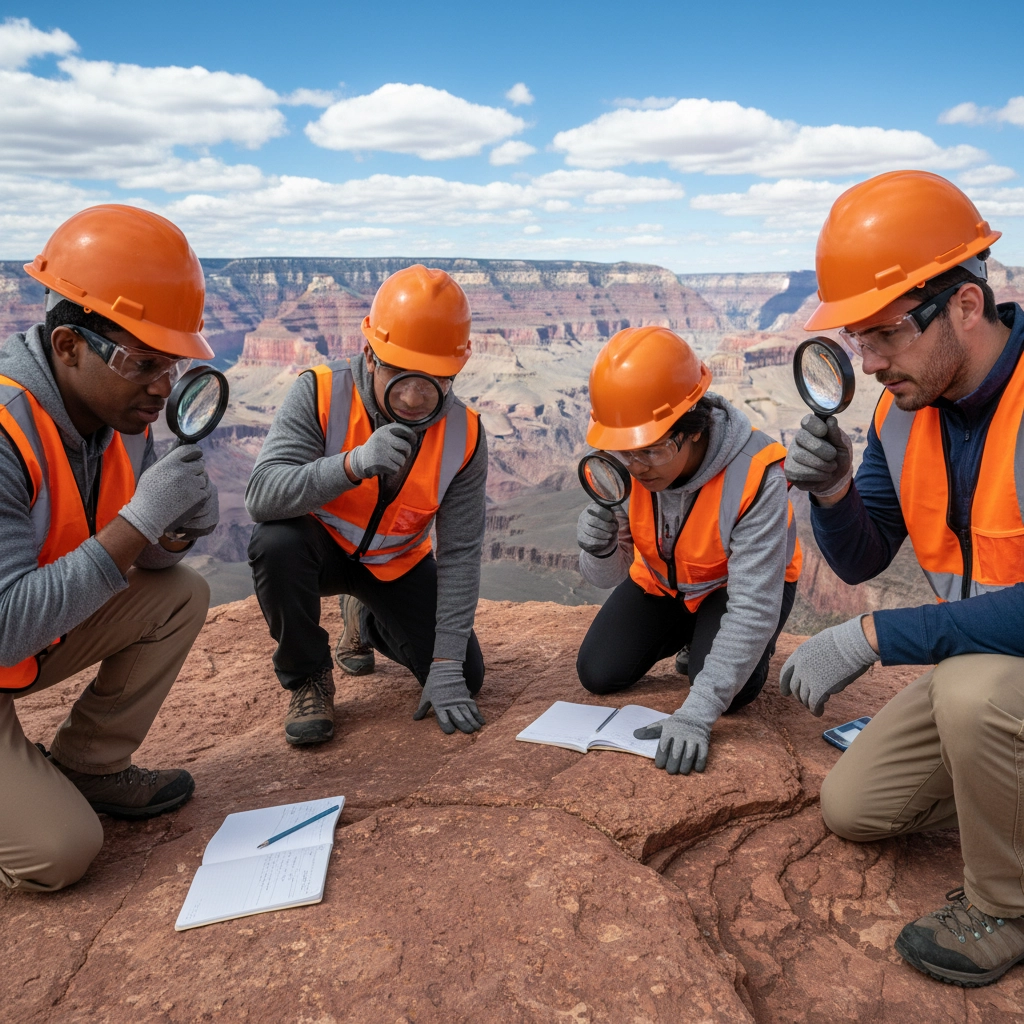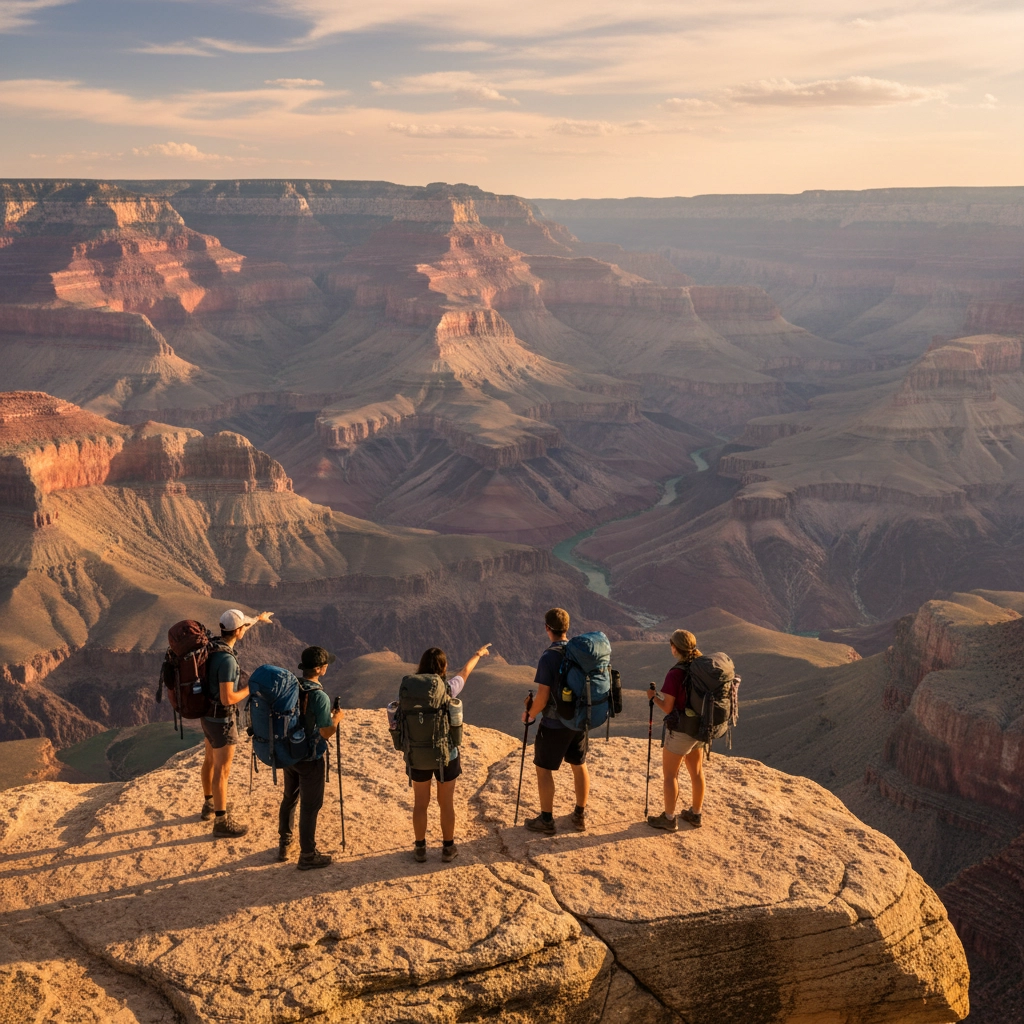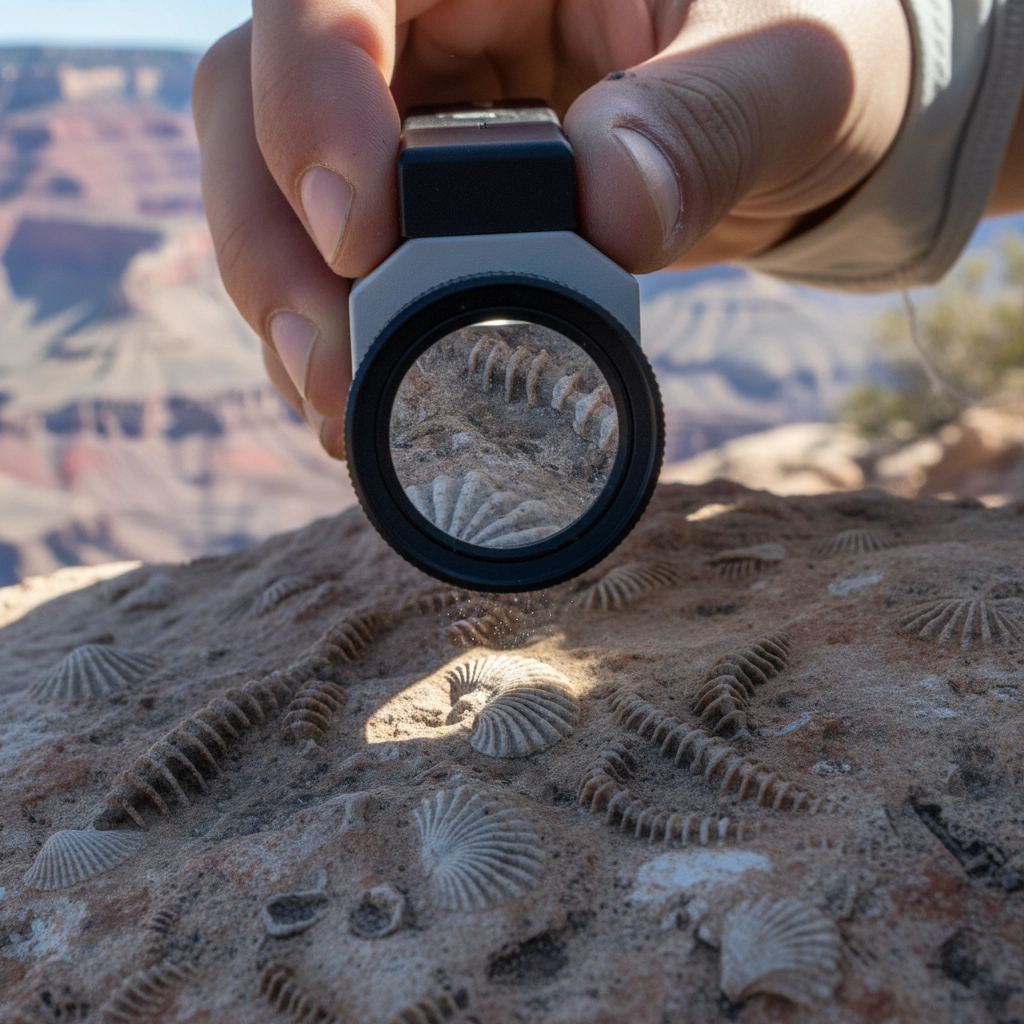Student Trip to Grand Canyon: 15 Hands-On Earth Science Activities That Make Geology Unforgettable
- Caleb Mullenix
- 1 day ago
- 5 min read
Planning an educational trip to the Grand Canyon requires careful preparation to maximize learning opportunities while ensuring student safety and engagement. The canyon's exposed rock layers reveal nearly two billion years of Earth's history, creating an unparalleled outdoor laboratory where abstract geological concepts transform into tangible, hands-on learning experiences.
Successful Grand Canyon expeditions depend on structured activities that encourage systematic observation, scientific documentation, and analytical thinking. The following 15 activities provide teachers with comprehensive tools to create memorable educational experiences that reinforce classroom concepts while inspiring lifelong appreciation for Earth sciences.
Rock Layer and Stratigraphy Activities
1. Reading Rock Layers as Historical Documents
Begin by teaching students to interpret rock formations as chapters in Earth's geological story. Direct students to examine the Supai Group's banded sandstones and limestones, which indicate alternating desert and marine conditions over millions of years. Have students document color variations, texture changes, and structural characteristics as environmental indicators in their field notebooks.
Emphasize the importance of systematic observation by requiring students to sketch detailed cross-sections and record specific evidence of depositional environments. This foundational activity establishes the framework for understanding how geological processes create the spectacular formations visible throughout the canyon.
2. Rock Property Analysis and Documentation
Organize students into small groups to conduct systematic rock property observations throughout designated canyon viewpoints. Students should identify patterns related to weathering, erosion, and deposition that provide evidence of how different rock strata formed over geological time periods.
Ensure each group maintains detailed field notebooks documenting structural observations, mineral composition, and evidence of ongoing geological processes. This collaborative approach encourages peer learning while developing essential scientific observation skills.

3. Cross-Sectional Diagram Creation
Require students to create accurate, detailed cross-sectional diagrams of major canyon formations, labeling rock layers, geological time periods, and structural characteristics. Students must demonstrate understanding by explaining the relationship between rock characteristics and ancient environmental conditions for each formation.
This activity reinforces spatial reasoning skills while helping students visualize the three-dimensional nature of geological formations. Encourage students to use geological time scales and proper scientific terminology in their diagrams and explanations.
4. Geological Timeline Construction
Challenge students to construct comprehensive timelines illustrating the sequence of events that formed Grand Canyon rock strata. This activity helps students grasp the concept of "deep time" by connecting specific rock formations to major geological and biological events in Earth's history.
Students should research and include major extinctions, climate changes, and tectonic activities that influenced canyon formation. This synthesis activity demonstrates how local geological features connect to broader Earth system processes.
Field Exploration and Investigation Activities
5. Guided Geological Hiking Programs
Structure hiking experiences along South Rim and North Rim trails around specific geological observation points where students collect data, create sketches, and gather evidence supporting classroom concepts about sedimentary processes and landscape evolution.
Ensure proper supervision and safety protocols during all hiking activities. Provide students with clear objectives for each observation stop, encouraging them to connect field observations to theoretical concepts learned in the classroom.
6. Active Erosion Evidence Investigation
Direct students to systematically explore designated areas seeking evidence of forces currently widening and deepening the canyon. Students should document erosion patterns, loose rock accumulations, weathering processes, and mass wasting examples.
This investigation helps students understand that the Grand Canyon represents a dynamic, continuously changing geological system rather than a static historical artifact. Encourage students to predict future landscape changes based on their observations.
7. Colorado River Impact Assessment
Organize supervised activities where students observe and document the Colorado River's role in canyon formation. Students should examine river cutting patterns, sediment transport evidence, and the relationship between river dynamics and canyon development.
Safety remains paramount during river-related activities. Ensure all students maintain appropriate distances from cliff edges and follow established safety protocols while making observations.

8. Weathering Process Documentation
Have students identify and document various weathering processes occurring throughout the canyon, including frost wedging, chemical weathering, and biological weathering examples. Students should photograph or sketch evidence and explain the mechanisms responsible for each weathering type.
This activity connects classroom chemistry and physics concepts to real-world geological processes, demonstrating how multiple factors work together to shape landscape features over time.
Paleontological Discovery Activities
9. Supervised Fossil Hunting Expeditions
Organize carefully supervised fossil hunting activities in designated areas where students can discover marine fossils including brachiopods, crinoids, and trilobites preserved in canyon rock layers. Teach proper paleontological techniques including careful excavation methods and ethical collecting practices.
Emphasize the importance of documentation and responsible collecting. Students should record precise locations, geological contexts, and detailed descriptions of any fossils discovered during supervised activities.
10. Microscopic Fossil Examination
Incorporate portable field microscopes to reveal detailed structural features invisible to naked-eye observation. Students develop advanced scientific observation skills while discovering the intricate beauty of ancient life forms preserved in canyon sediments.
This activity demonstrates how technology enhances scientific investigation while providing students with hands-on experience using professional geological equipment in field conditions.

11. Fossil-to-Environment Interpretation
Challenge students to transform fossil observations into compelling narratives about ancient life forms and environmental conditions. Students should identify fossil locations within specific rock layers and interpret what these remnants reveal about ancient climates, ocean conditions, and evolutionary processes.
This synthesis activity requires students to integrate paleontological evidence with geological observations to reconstruct ancient environments and understand how life forms adapted to changing conditions over geological time.
Visual and Experiential Learning Activities
12. Grand Canyon Skywalk Scientific Observation
Utilize the glass walkway extending over the canyon to provide unique perspectives for systematic geological observation. Students can observe vertical rock sequences and understand scale relationships impossible to achieve from traditional viewpoints.
Ensure all safety protocols are followed during Skywalk activities. Provide students with specific observation objectives to maximize the educational value of this distinctive vantage point.
13. Wildlife and Desert Ecosystem Studies
Implement comprehensive desert ecology investigations focusing on high desert plant and animal adaptations. Schedule early morning or late afternoon wildlife observation sessions when desert animals are most active, allowing students to document species diversity and habitat relationships.
Students should create detailed ecological surveys documenting bighorn sheep, elk, mule deer, and bird species while learning about food webs, habitat requirements, and conservation challenges facing desert ecosystems.
14. Geological Photography and Documentation
Teach students to use photography as a scientific documentation tool, creating systematic photographic records of geological formations, fossil discoveries, and erosional features. Students should maintain detailed captions explaining geological significance and scientific context for each photograph.
This activity develops visual literacy skills while creating valuable documentation for post-trip analysis and assessment activities. Encourage students to consider lighting, scale, and composition when creating scientific photographs.
15. Interpretive Synthesis and Presentation
Design culminating activities requiring students to synthesize field observations and create comprehensive interpretations of geological processes that formed each major rock layer. Students should prepare presentations explaining how, what, where, why, and when each geological process occurred.
This capstone activity demonstrates comprehensive understanding while developing communication skills essential for scientific careers. Students should incorporate evidence gathered throughout their expedition to support their interpretations and conclusions.
Maximizing Educational Impact
These 15 activities work synergistically to create comprehensive educational experiences that transform the Grand Canyon's towering walls into powerful teaching tools. Successful implementation requires careful preparation, systematic observation protocols, and structured follow-up activities that reinforce learning objectives.
Ensure all activities emphasize safety, scientific accuracy, and environmental stewardship. Students should understand their responsibility to protect these natural resources for future generations while developing deep appreciation for Earth's geological heritage.
Appleseed Expeditions specializes in creating structured, educational Grand Canyon experiences that maximize learning opportunities while ensuring student safety and engagement. Our experienced guides work closely with educators to customize activities that align with curriculum objectives and create lasting scientific understanding for students of all ages.



Comments